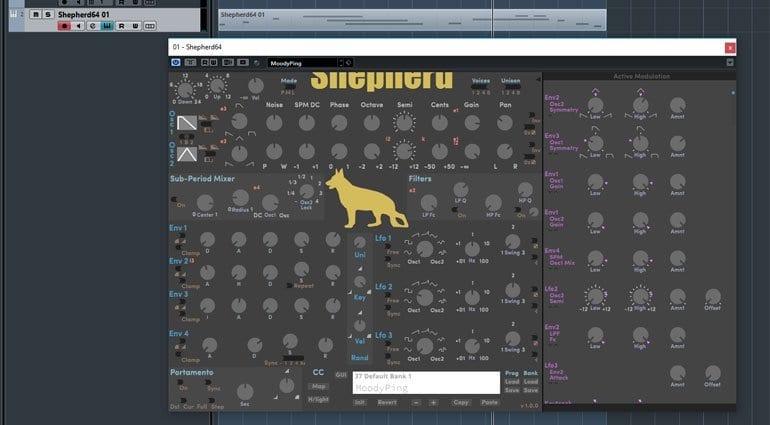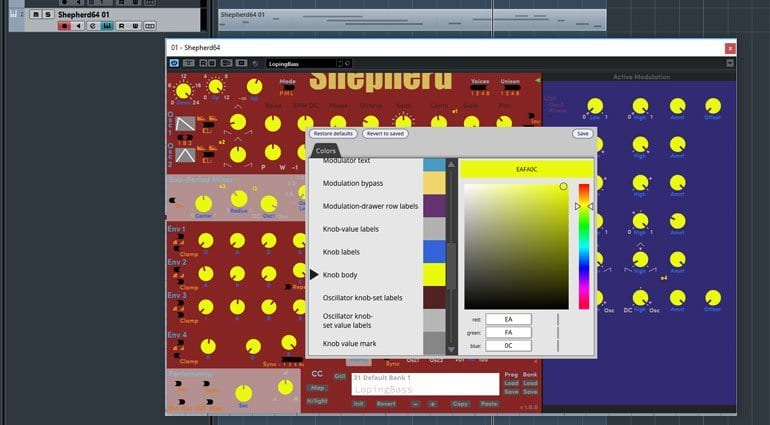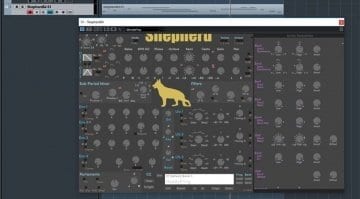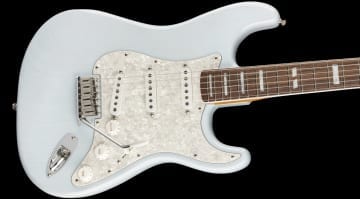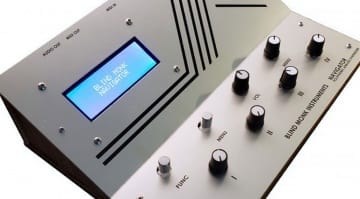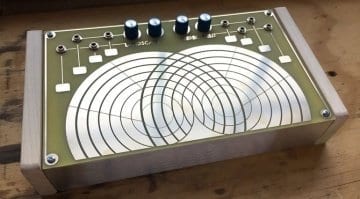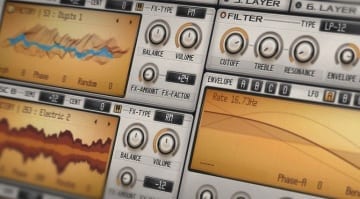Blind Dog’s Shepherd: Generic look but unique sounds
It’s a software synthesizer that blends two oscillator waveforms in alternating segments shorter than their wavelengths. It’s difficult to explain but it sounds a lot like pulse width modulation and phase shifting. The movement and energy in the sound is pretty remarkable and slightly strange. Is it called Shepherd because it’s bringing elements together safely. Or is it named after the creepy android in Aliens? Who can tell, it’s all slightly weird.
Shepherd
This is very serious synthesis. The website says that it’s not about samples or wavetables, loops or grooves, this is about synthesis. It’s also not about nostalgia. Blind Dog Designs have no interest in looking backwards, they want explore new territories of synthesis. In fact the might have a tiny bit of a chip on their shoulder about it.
So what’s it all about? You have two oscillators with saw, square and trapezoid waveforms, that can be combined in the normal way. Then there are seven sub-period parameters that push the waveforms into this strange and quite aggressive sounding sub-period mixing. You then have some expanded envelope options like DADSR with a delay at the start, or AHDSR with a hold after the attack, and IADSR with an initial level at the front. There’s a particularly fierce filter with all the usual parameters. There are three LFO’s with swing but most other things can also be used as modulation of sorts.
The sub-period mixing thing is demonstrated on the website with a couple of animations. It’s really very interesting and you should make sure you go off and check it out once you’ve got to the bottom of this article.
It took me a while to discover it but all the modulation is done by drag-and-drop. Simply drag the word “LFO1” onto the filter cutoff and it’s then assigned to it. A side window displays all the modulation assignments and parameters and these can be re-order and edited. You can also modulate the modulation parameters. There are no effects included because, as they said at the start, it’s all about the synthesis.
Interfacing
The GUI is all a bit drab. There’s a bit of the “push-a-grey-button-on-a-grey-background-and-a-grey-light-lights-up-grey-to-tell-you-you’ve-done-it” kind of thing going on. It’s crowded and fussy. There doesn’t seem to be any options to scale the interface to make the controls a bit friendlier on a high definition screen. And then you find the tiny GUI button and bazinger! You can change the colour of every single element of the interface. You want purple knobs? No problem. Orange text? Of course you can and very quickly you find yourself reaching for the “Restore defaults” button. Maybe the grey is all right after all. The dog could be pink though.
So I am not enamoured by the interface and I almost passed it by simply because it looked a bit like a SynthEdit VST interface or a college students first interface design. But the sound creation possibilities in here are worth dipping into the grey for. It’s not simplistic, it invites experimentation, thought and time but when given these things the results can be excellent. To top it off they’ve got a few artists, really good and interesting artists (Kaitlyn Aurelia Smith, ZAVOLOKA, Edward Rogers, and Container), to not only contribute some sounds but also a musical piece made with those sounds. Find them on the website because they brilliantly demonstrate why this synth deserves your time.
Shepherd is available for MacOS and Windows for $65. There’s also a demo available where you can use it for 30 minutes before having to reload. More information can be found on the Blind Dog Designs website.

